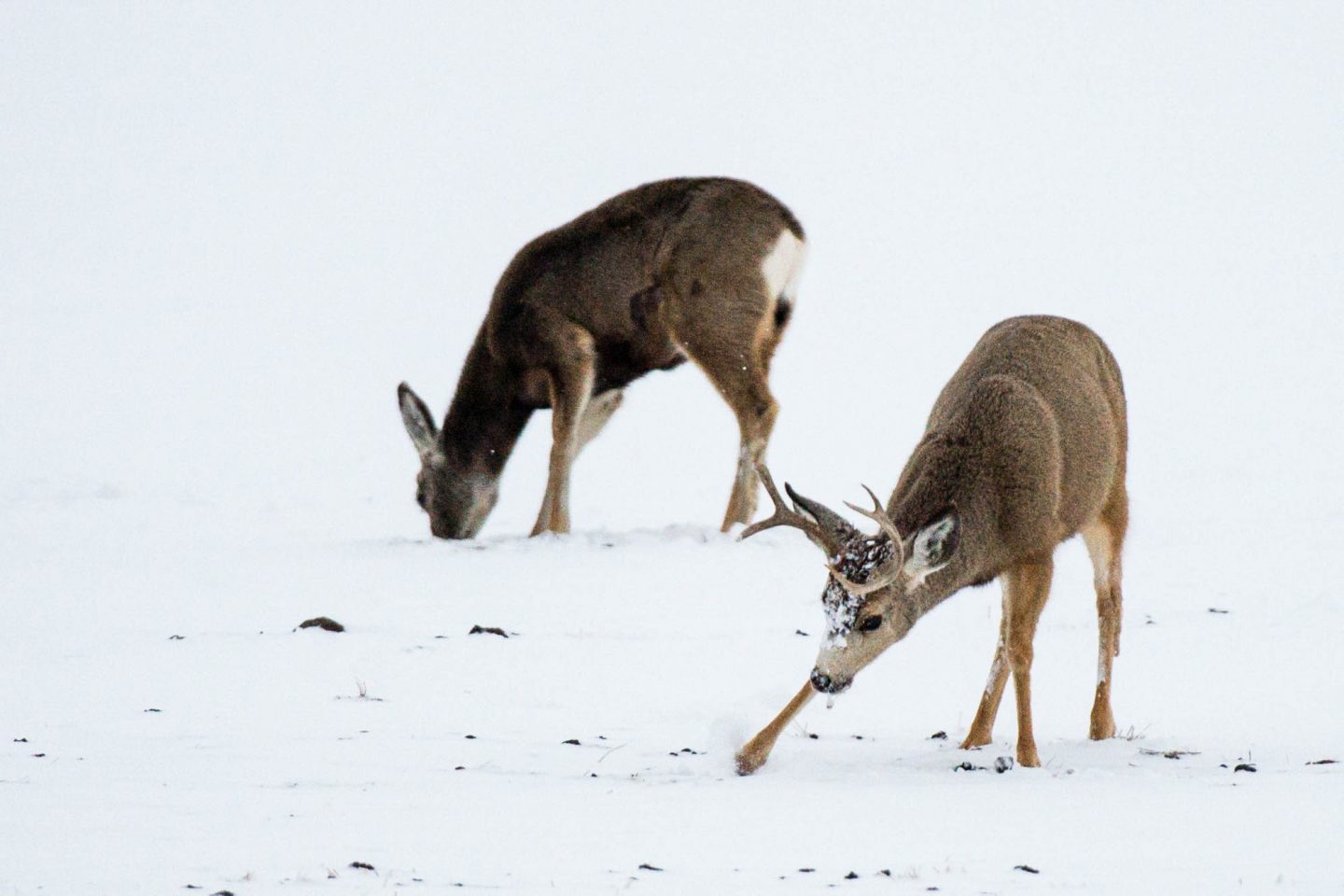
By Monica Macoubrie, Wildlife Education Specialist
For wildlife, winter is a season of clever strategies and survival instincts. Picture a squirrel burying nuts or a red fox leaping acrobatically through the snow to snag a hidden snack. Although the chilly months can be harsh, the resourcefulness of Nebraska’s animals is to be appreciated. Let’s dive into the fascinating ways these creatures keep their bellies full when the frost sets in.
Hoarding and Stashing
Many animals get ready for winter by storing food in the warmer months, a behavior known as “caching.” Species such as squirrels, moles, birds and shrews use this strategy. Gray squirrels, for example, collect acorns, walnuts and other nuts, burying them in various spots. Impressively, they rely on memory and scent to recover hidden food, even months later. During the caching period, the brains of these squirrels grow, particularly in males, likely due to the heightened mental effort needed to store food for survival.
Another mammal that stores food, though in a different way, is the short-tailed shrew. To keep their food fresh, these shrews rely on keeping it alive. They mostly hunt insect larvae, and their saliva contains a toxin that, when injected through a bite, paralyzes the prey. This toxin causes prey to fall into a comatose state, allowing the shrews to store it in their nest for later meals, which can be days or even weeks later. If the prey awakens before the shrew is ready to eat, it is bitten again and sent back into a state of paralysis.
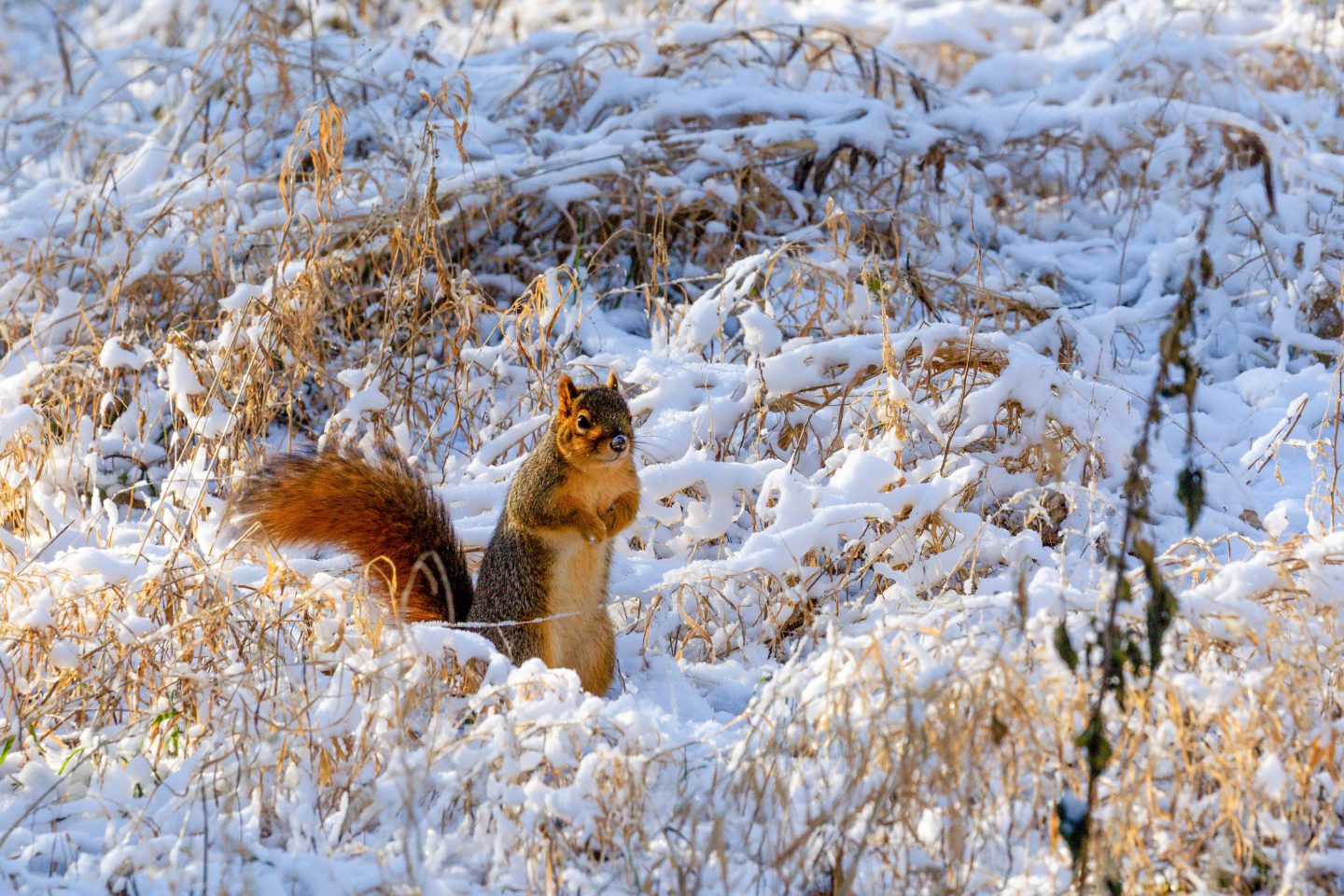
Foraging Through the Snow
Not all animals in Nebraska have the ability to store food or hibernate, so many have developed unique adaptations to forage successfully throughout the winter. Deer and elk remain active year-round and continue to search for food even when snow blankets the ground. Their broad hooves allow them to dig through the snow to uncover food underneath. When their usual food sources, such as grasses and shrubs, are no longer accessible, they switch to browsing on tree bark, twigs and woody plants. Deer are also known to feed on dried leaves and, in some cases, the bark of evergreen trees, such as pines and firs.
Similarly, many bird species in Nebraska have adapted to winter foraging by altering their diets. Birds like the northern cardinal and downy woodpecker feed on seeds from trees and shrubs that remain accessible during the colder months. Other birds, such as the black-capped chickadee, forage for insects found in tree bark or logs that can still be uncovered on the frozen landscape. During winter, many birds also visit bird feeders where people provide seeds and suet, helping to supplement their diets.
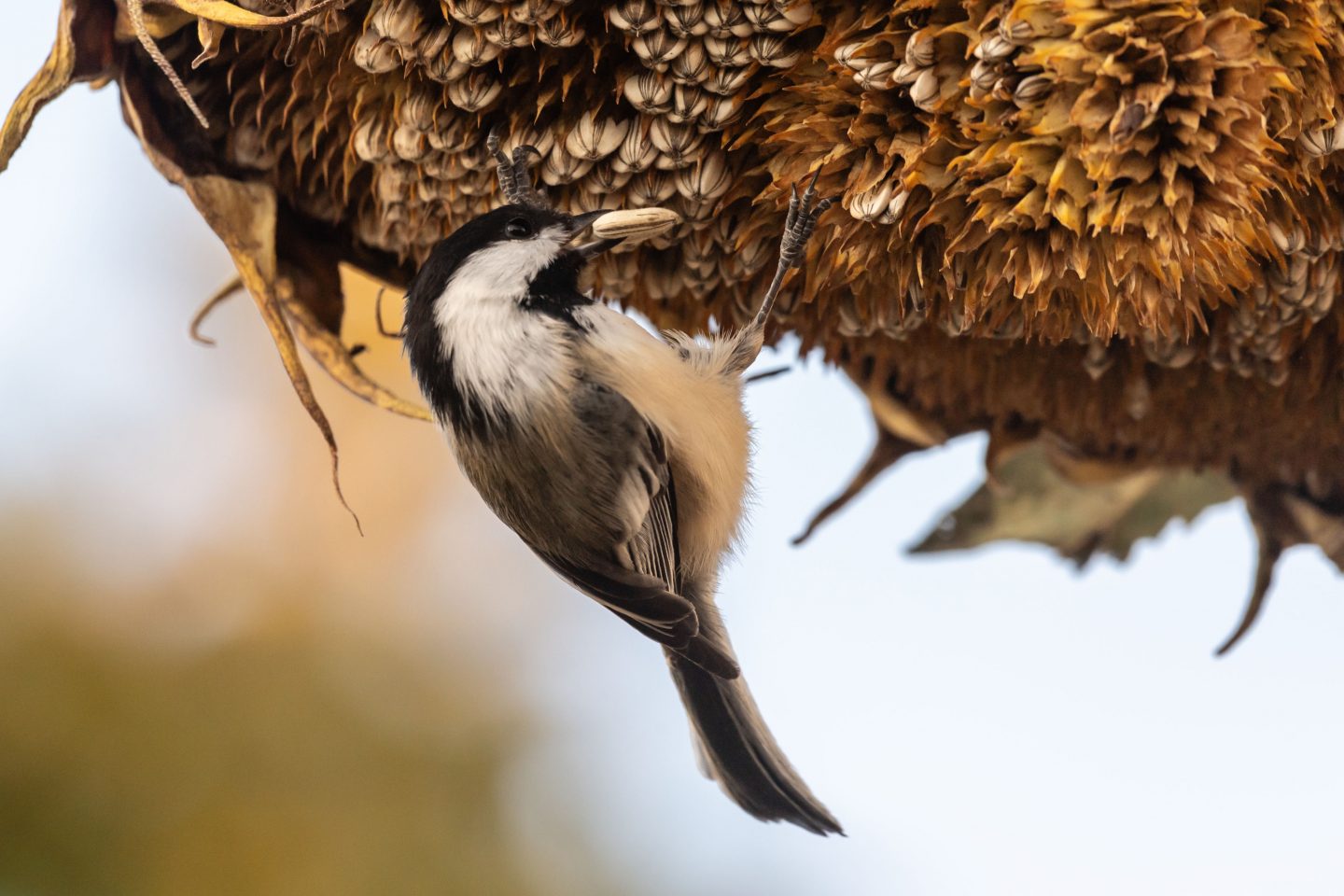
Coyotes and red foxes are opportunistic feeders. In addition to hunting small mammals, birds and scavenging carcasses, they may also turn to fruits, berries and other plant matter when animal food sources are scarce.
Hunting in Winter
Predators face their own challenges in finding food during winter. Hawks, owls and foxes rely on their sharp senses and hunting skills to catch prey. Red foxes use their acute hearing to detect voles and mice moving beneath the snow. With precise calculation, they leap into the air and dive headfirst into the snow, breaking through the frozen surface to snatch their meal. This hunting method, called “mousing,” is a spectacular display of agility and accuracy, often with a success rate that improves when aided by the earth’s magnetic field, a behavior called magnetic alignment.
Owls, particularly great horned owls, are master hunters of the night. Their exceptional low-light vision and near silent flight allow them to find and ambush prey undetected. Unlike diurnal predators, these owls take advantage of the winter’s long nights, scanning open fields and wooded areas for unsuspecting rodents and rabbits.
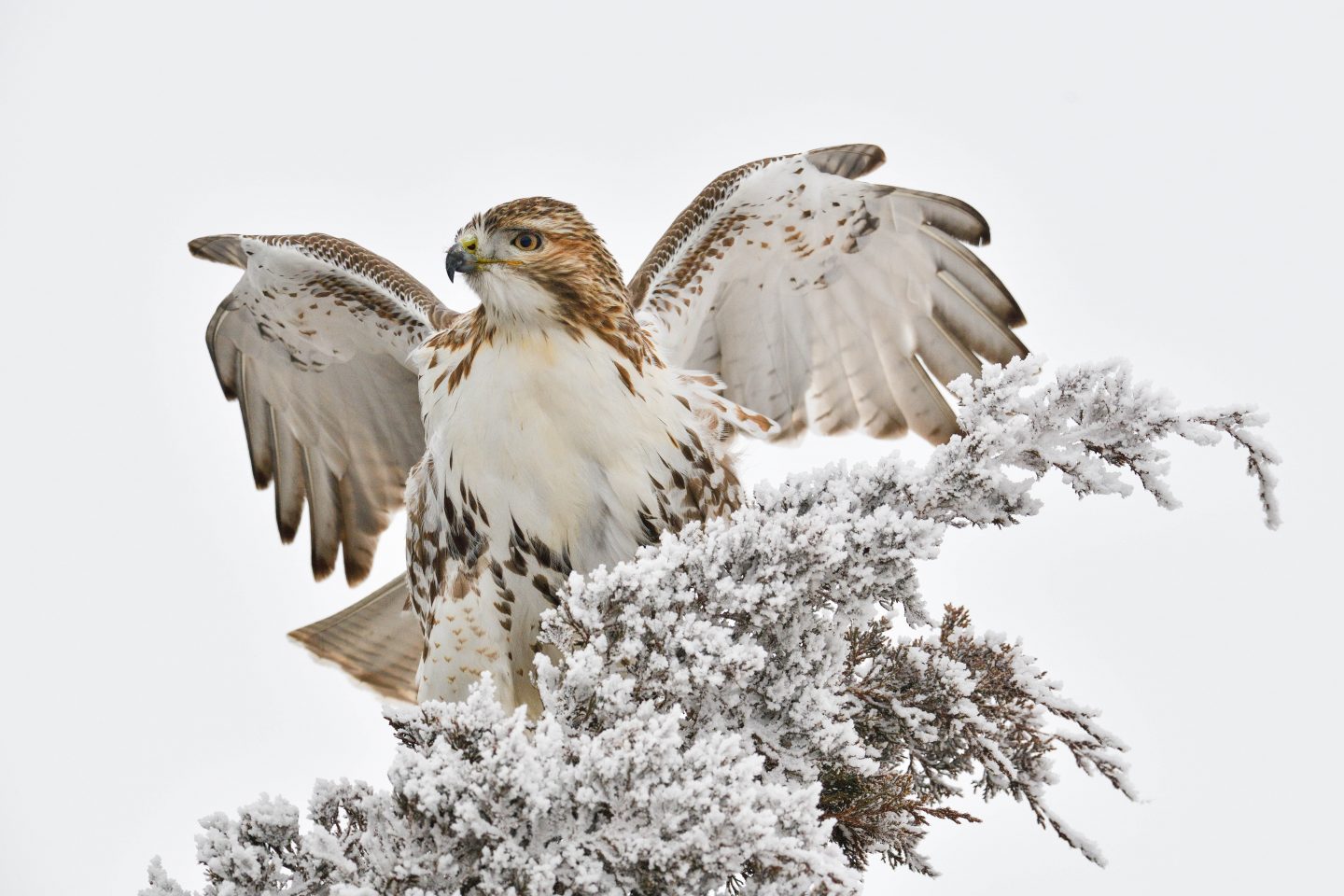
Hawks, like the red-tailed hawk, remain active during the day, soaring high above snow-covered landscapes in search of movement. With their keen eyesight, eight times sharper than that of humans, they can spot a vole or rabbit from great distances. Once they identify a target, they dive swiftly, using their powerful talons to grasp prey before flying off to consume it.
Human Assistance
In urban and suburban areas, some wildlife benefits from human-provided food sources. Bird feeders stocked with seeds and suet can be a lifeline for species like chickadees, finches and woodpeckers. However, it’s important for people to feed wildlife responsibly. Offering the right foods in moderation can support animals without disrupting their natural behaviors or causing dependency. For instance, black oil sunflower seeds are a great choice for many birds, while suet provides essential fats during cold months. Providing fresh water in heated bird baths can also be a crucial resource when natural water sources are frozen over.
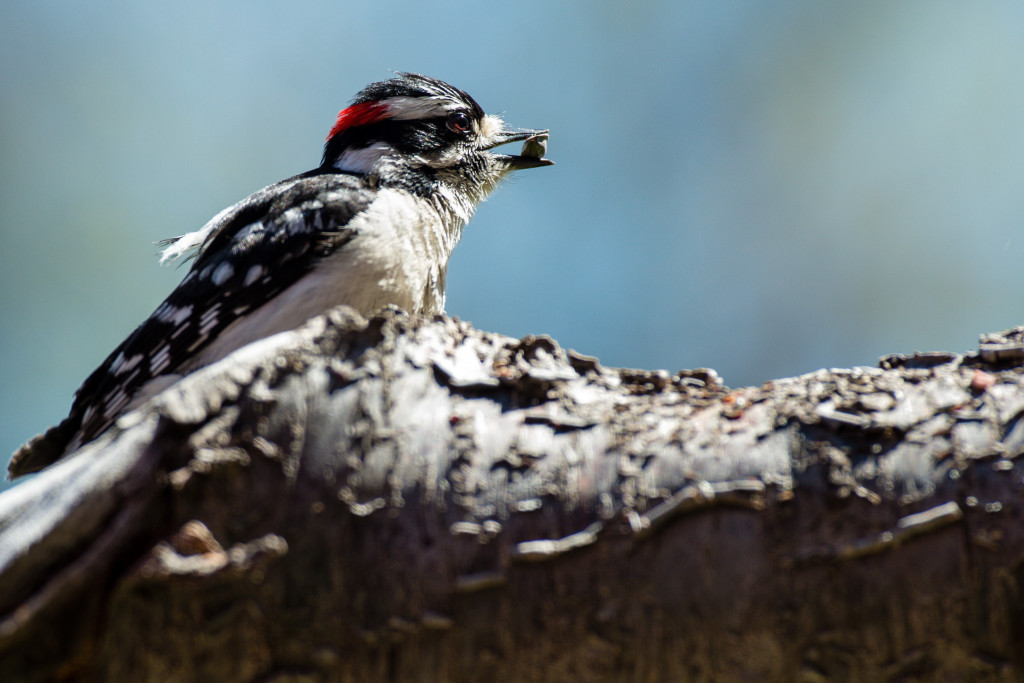
Beyond birds, some people opt to leave out food for deer or other mammals. However, this can sometimes do more harm than good, as large gatherings of animals can spread disease and attract predators. Instead, creating a wildlife-friendly backyard with native plants and shrubs can be a more sustainable way to support animals throughout the winter. Leaving seed heads on plants like coneflowers and black-eyed Susans offers natural food sources, while brush piles can provide shelter for small mammals and birds.
Nebraska’s winter landscape may seem barren, but it’s teeming with life and ingenuity. From caching food to adapting diets to relying on human assistance, animals have evolved diverse strategies to find sustenance during the harshest months.
